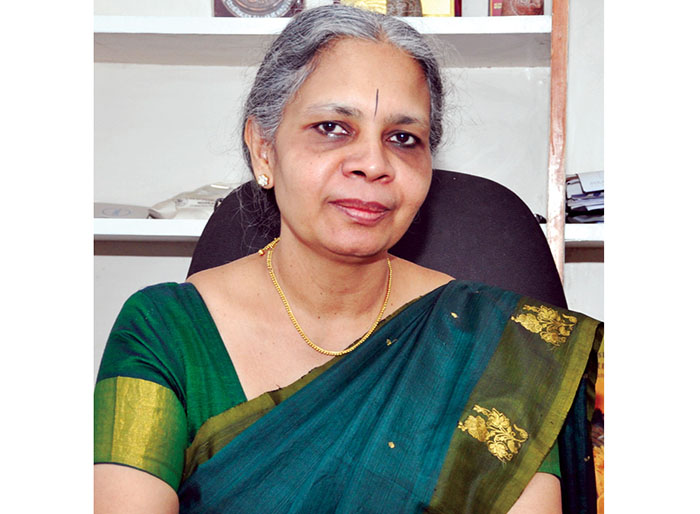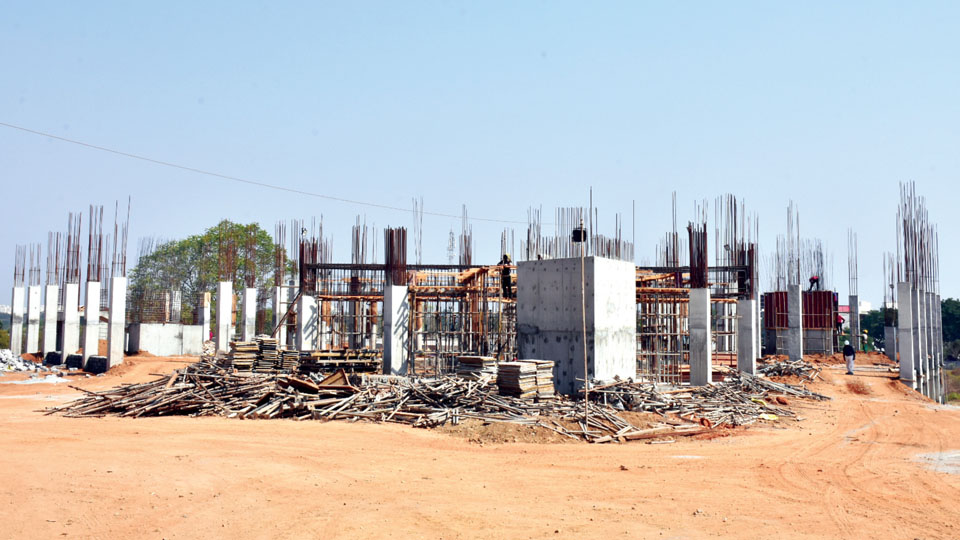Rs. 81-crore project overseen by Principal Scientific Advisor to Government of India and managed by Indian Institute of Astrophysics, Bengaluru
Mysore/Mysuru: The civil works for the state-of-the-art planetarium and allied blocks in Mysuru are advancing at an accelerated pace on a three-acre plot in the University of Mysore (UoM) campus at the foot of Chamundi Hill.
Pillars have been erected to support the construction of the domes, marking significant progress in the project.
The project is being overseen by the Principal Scientific Advisor to the Government of India and is managed by the Indian Institute of Astrophysics (IIA), Bengaluru, an autonomous institute under the Department of Science and Technology, Government of India.
The planetarium is coming up at an estimated cost of Rs. 81 crore as part of the Cosmology Education and Research Training Centre (COSMOS) project and is funded by MPLAD funds from Finance Minister Nirmala Sitharaman, the Department of Science and Technology and the Department of Atomic Energy, Government of India.
The foundation stone was laid by Nirmala Sitharaman on Mar. 6, 2022 and the project is scheduled to be completed this year.
Speaking to Star of Mysore, IIA Director Prof. Annapurni Subramaniam confirmed that the project is on schedule and advancing smoothly, with completion expected later this year.
“Once the civil works are finished, installations will commence simultaneously. We aim to finalise all installations by the end of this year,” she said.
The facility will feature a 15-metre LED dome planetarium with a 15-degree inclination (tilt), capable of accommodating approximately 130-150 individuals.

Not a conventional planetarium
When asked about the speciality of the LED dome planetarium that is coming up in Mysuru and how is it distinctive from other planetariums, IIA Director Prof. Annapurni Subramaniam said that the LED (Light Emitting Diode) Planetarium uses arrays of LED lights mounted directly on the dome’s interior.
“These panels work together to create a seamless and immersive visual experience for the audience. LEDs themselves emit light, creating a more vibrant and detailed image. It offers superior brightness, a wider colour range and sharper resolution. LED dome planetariums offer higher brightness levels and improved contrast ratios compared to conventional projection systems. This results in vivid and vibrant visuals,” she explained.
In contrast to projection systems utilising a projector, the LED dome system employs the entire dome as a vast monitor, resulting in superior image quality, brightness and unrivalled contrast and colour rendition.
LED dome suits best when you have large events which are taking place these days. So the entire dome will be full of LED panels and the key advantage lies in their ability to deliver significantly enhanced contrast with 8K resolution, thereby eliminating the issues commonly encountered with conventional projection systems, where images frequently suffer from washout, the IIA Director added.
Outreach programmes at schools
Regarding outreach programmes aimed at fostering awareness of astronomy among students, the COSMOS Centre in Mysuru has been proactive. N. Amoghavarsha is the Project Associate of COSMOS, Indian Institute of Astrophysics, Vijnana Bhavan, Manasagangothri.
“Initially, when embarking on the planetarium project, it was understood that construction and setup would span a couple of years due to its long-term nature. However, recognising the urgency of promoting astronomy education, it was deemed imperative to commence outreach programmes without delay,” Prof. Annapurni Subramaniam explained.
While the planetarium’s construction progresses, the COSMOS Centre has initiated various outreach activities, understanding that they need not await the completion of the physical facility. Once the planetarium is operational, regular shows will commence, but the COSMOS Centre remains committed to ongoing public outreach and educational endeavours and these efforts have proven successful in Mysuru, she explained.








Recent Comments